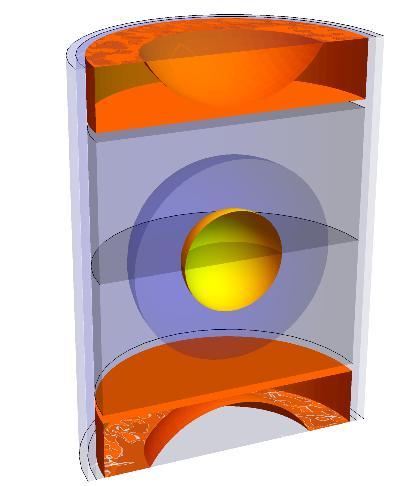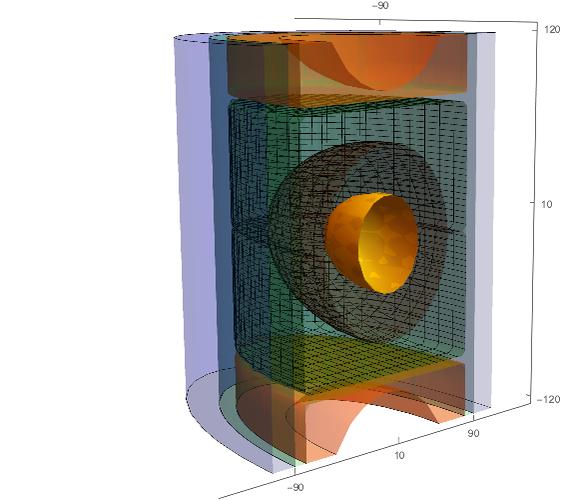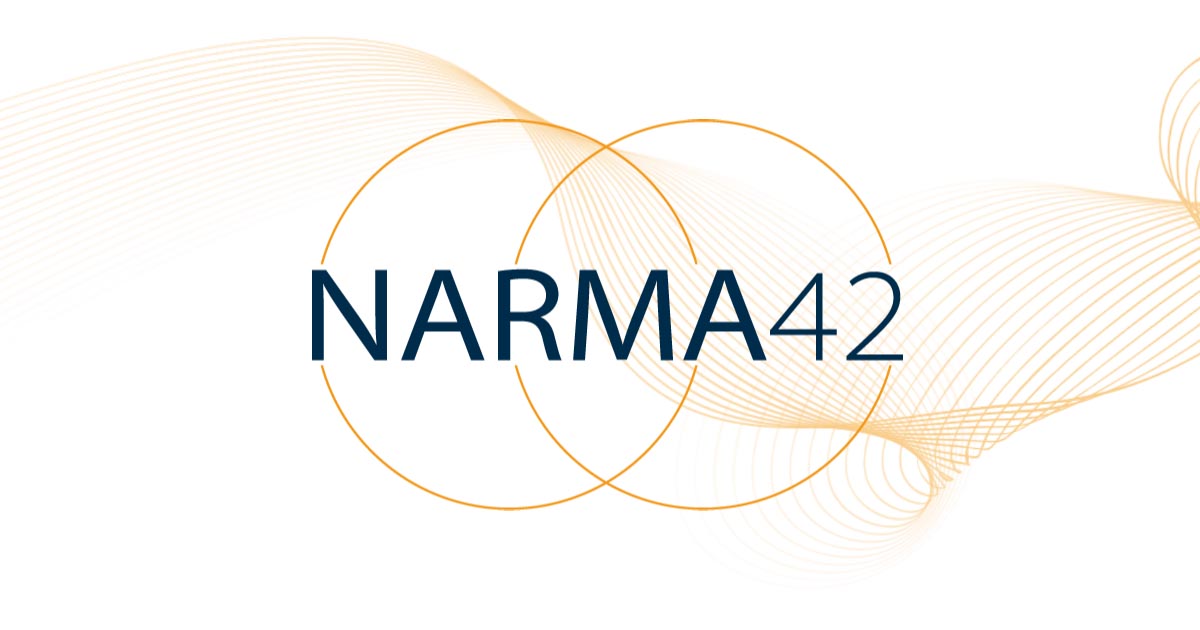Geometric modelling
Scope
A spherical nuclear fuel element, as used in Pebble Bed Reactors, must be tested in a test reactor.
The pebble fuel element must be enclosed in a cylindrical structure, which is then to be located in a containing tube.
The objectives are:
to generate high fuel element temperatures at low power
low fuel temperatures at high power
to generated a temperature profile inside the fuel element as spherical as possible.
This notebook is about the modelling in view of FEM temperature computations.
The results of the FEM computations are reported in another notebook.
NB
The dimensions and material values used are not representative for the real objects.
Structure of the test device
This is a general view, cut along the vertical axis.

The fuel element (yellow) is contained in a graphite pebble (blue).
The pebble is contained in a graphite cylinder (gray) built up in 2 parts.
The graphite cylinder is contained in a tube.
Above and below the graphite cylinder there is respectively a top piston and a bottom piston. Te material of these pistons can be Graphite, Aluminum, Copper.
Between the graphite cylinder, the tube and the pistons there are gaps. The gaps can be filled with a mixture of Helium and Neon in the range 100% He to 100% Ne.
Simplified working description
The fuel element generates volumetric power due to fission.
All parts in the device generate volumetric power due to exposure to a strong gamma field.
All generated heat is evacuated by conduction through the structural elements.
The heat is also evacuated by conduction through the gas gaps.
The outer wall of the containing tube is cooled by a high velocity water flow.
Modelling in view of FEM computations
In order to be able to perform FM computations on the device, we need to define the geometry in terms of Regions.
Complete model
This is the complete geometrical model that can be used for FEM computations.

FEM Computations
In another notebook we will show how
the model can be simplified using existing symmetries
the model is transformed into a multi-region continuum.
Data Sources
Own data
Copyright
© 2019 JP Tollenboom, Partner in NARMA42.
